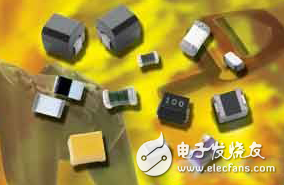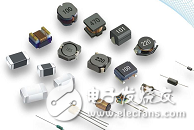RF inductors play a crucial role in high-frequency analog circuits and signal processing, which are essential for technologies like cell phones, RFID systems, test equipment, GPS, radar, Wi-Fi, and satellite radio. These components serve multiple purposes, such as tuning circuits, impedance matching, and acting as high-pass or low-pass filters. They are also commonly used as RF chokes to block high-frequency signals while allowing lower frequencies to pass through.
When designing with RF inductors, engineers have a wide range of options available. To help simplify the selection process, this article will explore different types of inductive components and their typical applications in modern electronics.
Applications of RF Inductors
RF inductors are found in a vast array of devices. As Maria del Mar Villarrubia, a development engineer at PREMO, explains, "There is an inductor inside the glass tube implanted in animals for tracking purposes." Even in everyday situations, like starting your car, you encounter RF inductors—there's one in the car and another in the key, enabling wireless communication between them.

Figure 1: RF inductors are fundamental elements in high-frequency electronic systems
Despite their widespread use, RF inductors are designed for specific functions. In resonant circuits, they are often paired with capacitors to select a particular frequency, such as in oscillators or voltage-controlled oscillators. This makes them essential for filtering and signal generation in RF systems.
Another important application is in impedance matching, where RF inductors help balance the impedance between different parts of a circuit, ensuring efficient data transfer between integrated circuits (ICs).
When used as RF chokes, these inductors are placed in series with a circuit to act as a low-pass filter, blocking higher frequencies while allowing lower ones to pass through. This helps reduce noise and interference in sensitive RF applications.
Understanding the Q Factor
The Q factor is one of the most critical performance metrics for inductors. It measures how efficiently an inductor stores energy compared to the energy it loses. A higher Q value means the inductor behaves more like an ideal, lossless component, offering better selectivity in resonant circuits.
Deryl J. Kimbro from Murata explains, "A higher Q value indicates better performance, closer to an ideal inductor, which improves frequency selectivity." Additionally, a high Q value reduces energy loss, making the inductor more efficient. On the other hand, a low Q value leads to a wider bandwidth and reduced resonance amplitude around the operating frequency.
Inductance Value
While the Q factor is important, the actual inductance value is equally crucial. For audio and power applications, inductors typically have values in the range of several henries. However, in high-frequency applications, smaller values—such as millihenries or microhenries—are usually required.
The inductance value depends on factors like the coil’s structure, core material, and number of turns. There are both fixed and adjustable inductors available, depending on the design needs.
Key Specifications Beyond Inductance
Other important specifications include DC resistance (DCR), rated current, and self-resonant frequency (SRF). These parameters help determine the suitability of an inductor for a given application.
Del Mar Villarrubia notes, "Depending on the application, certain features may be more critical. For example, in tire pressure monitoring systems, temperature stability is vital, which influences the choice of core material."
Rated Current
When selecting an inductor, it's essential to ensure that the operating current remains below the rated current specified. Exceeding this can cause damage to the component.

DC Resistance (DCR)
DCR directly affects the inductor's performance. As Kimbro explains, "The DC resistance represents the loss in the inductor. Larger wire diameters reduce DCR, increasing the rated current and improving efficiency."
Doug Lillie from Vishay adds, "DCR limits the amount of DC current the device can handle without overheating or saturating, which causes a sharp drop in inductance."
Self-Resonant Frequency (SRF)
Every inductor has a self-resonant frequency (SRF) where it behaves like a resistor. This occurs due to the distributed capacitance between the windings and the core. At SRF, the inductor's impedance becomes purely resistive. If the frequency exceeds SRF, the capacitive reactance dominates, reducing the inductor's effectiveness.
Laminated Chip Inductors
Laminated chip inductors are manufactured using a ceramic-based structure, offering excellent performance at high frequencies. Their laminated design allows for a wide range of inductance values, making them versatile for various RF applications.
Zgar International (M) SDN BHD , https://www.zgarvape.com
